October: Fall Light Takes Hold
Fall has taken hold but the meadow is determined to hang on. The temperature varies across the field. Up on top it is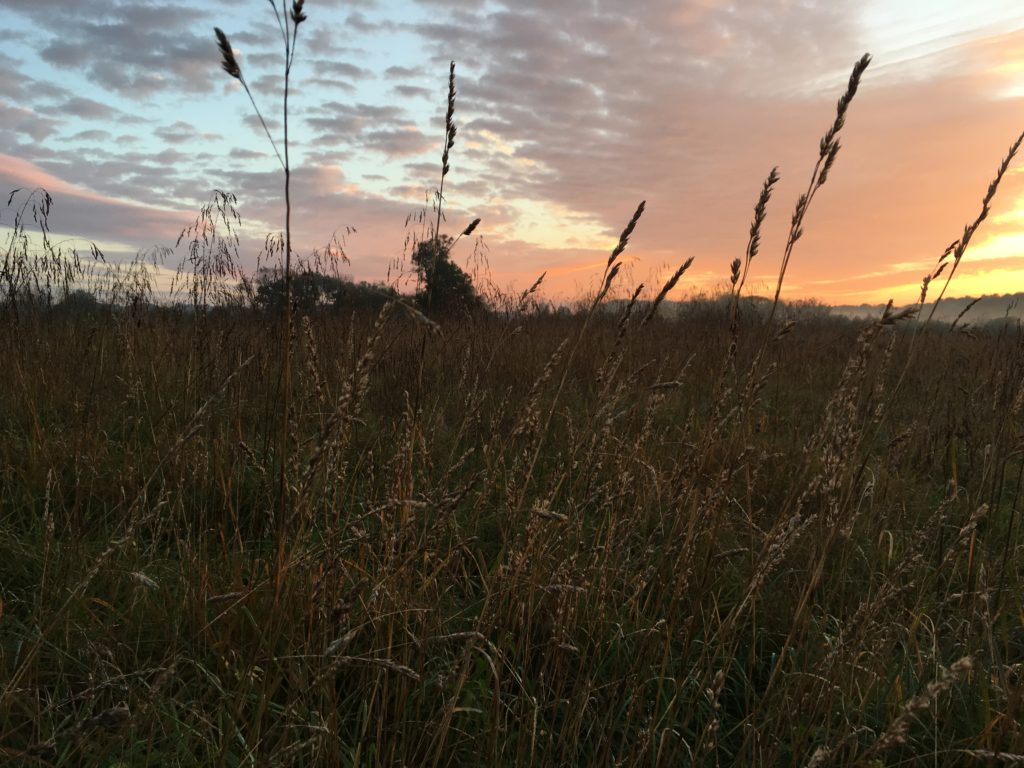 much cooler and the plants start to go dormant sooner than the areas sheltered by the crest of the hill. The dawn’s golden light bathes the meadow with a magical quality that makes you stop and stare, meditating on the beauty of the earth. I think that is the point of biophilic design – making you pause and see, really see, the world around you, causing you to take a relaxing breath and truly be.
much cooler and the plants start to go dormant sooner than the areas sheltered by the crest of the hill. The dawn’s golden light bathes the meadow with a magical quality that makes you stop and stare, meditating on the beauty of the earth. I think that is the point of biophilic design – making you pause and see, really see, the world around you, causing you to take a relaxing breath and truly be.
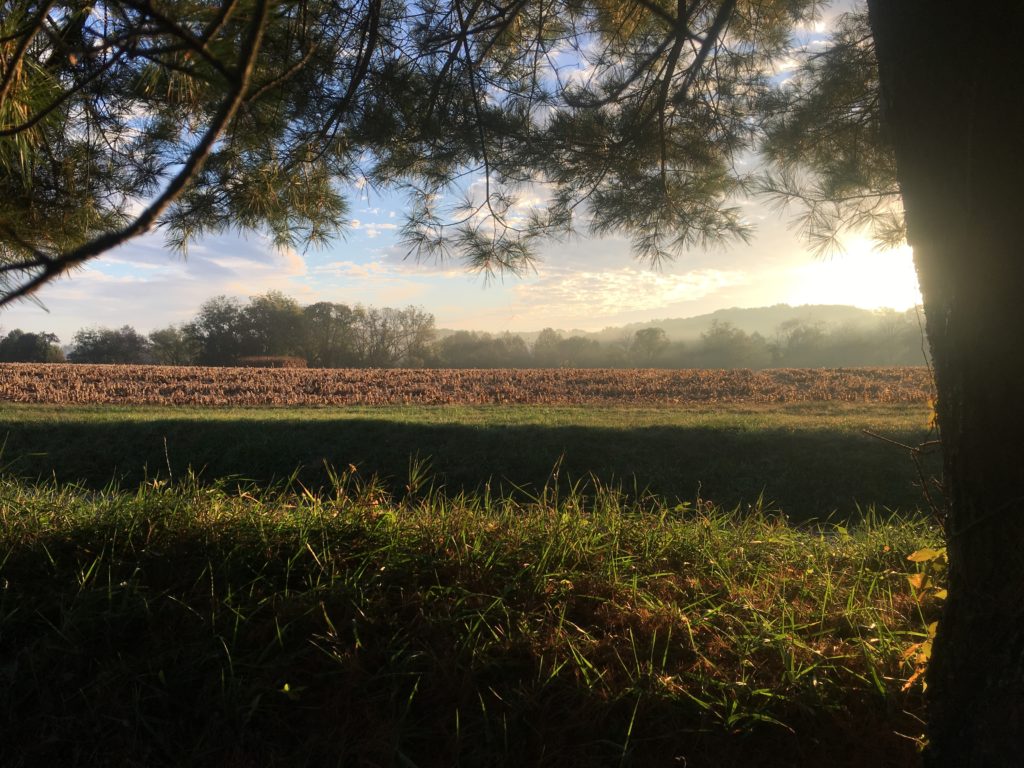 October, like April, is a mixed-up month. Lots of the meadow is focused on wrapping up the season: butterflies and birds preparing to depart for warmer climes, flowers and grasses spreading seed for next year, or trees and grasses going to sleep for the winter. At the same time, new flowers are blooming, the bees and beetles are busily pollinating the last flowers, and the birds are snacking on the seed heads.
October, like April, is a mixed-up month. Lots of the meadow is focused on wrapping up the season: butterflies and birds preparing to depart for warmer climes, flowers and grasses spreading seed for next year, or trees and grasses going to sleep for the winter. At the same time, new flowers are blooming, the bees and beetles are busily pollinating the last flowers, and the birds are snacking on the seed heads.
There are fewer butterflies as many have begun their migrations, but late in the month I came across a Monarch chrysalis that had not yet finished its metamorphosis. I 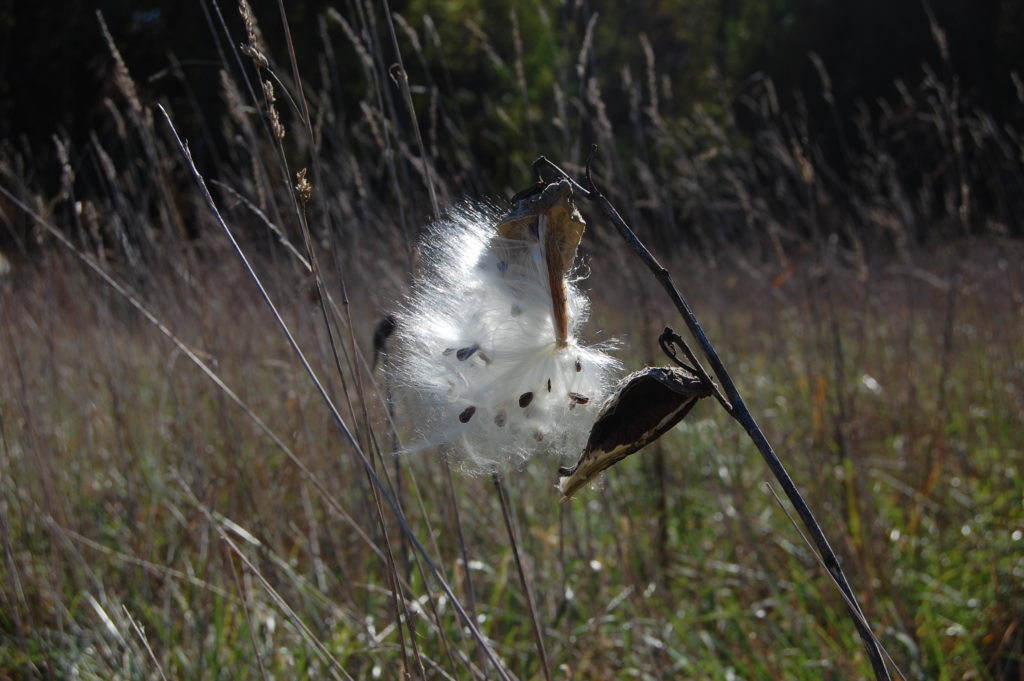
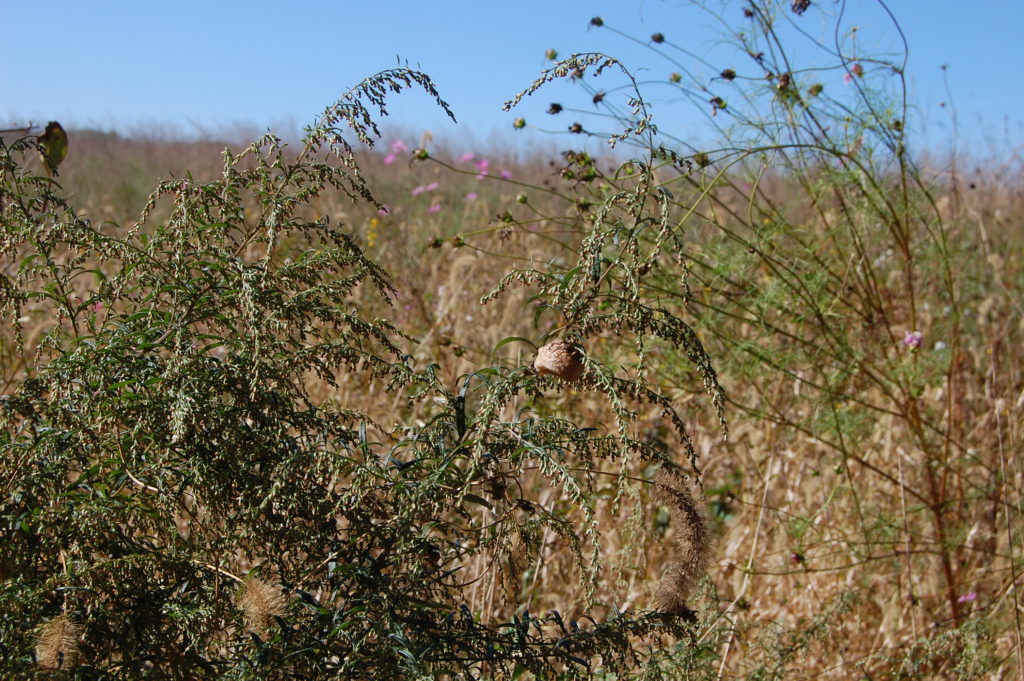
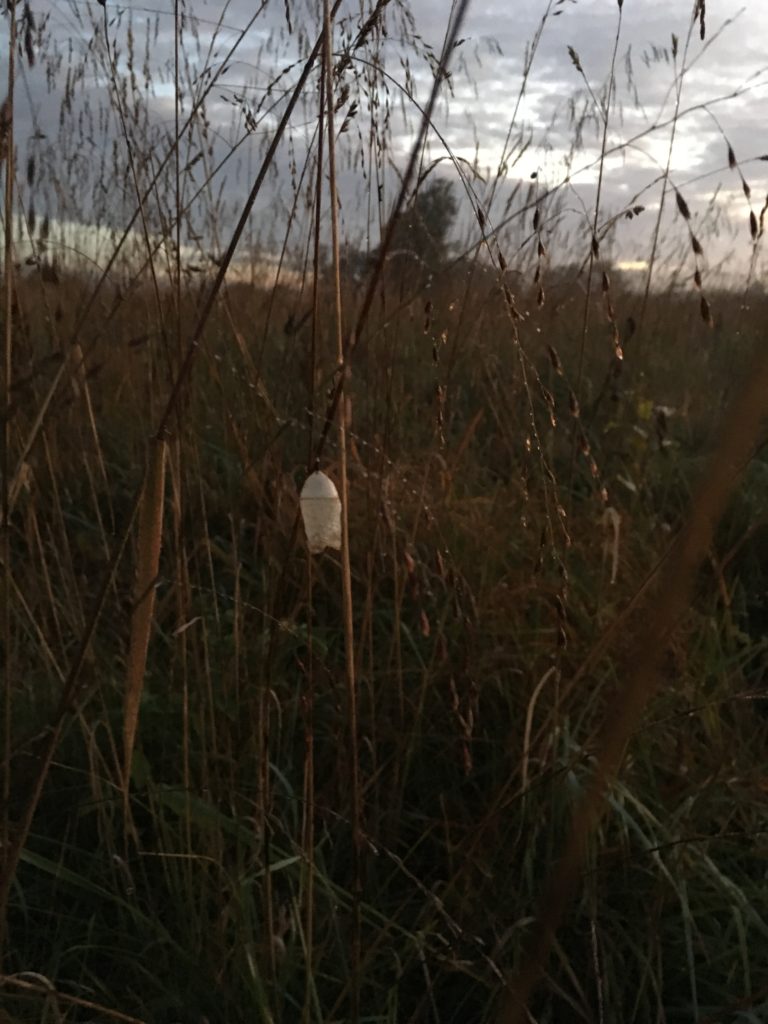 hoped that the weather would stay nice for it to open, have enough to eat, and then fly all the way to its winter vacation spot in Mexico. I wasn’t sure the odds were with it.
hoped that the weather would stay nice for it to open, have enough to eat, and then fly all the way to its winter vacation spot in Mexico. I wasn’t sure the odds were with it.
The New England Aster flowers appear bluer in the cool air. In Year 1, there was only one aster in the field. Year 2 there were many more and, that first one, developed into a large, showy clump. It is a delight to see the pinpoints of blue starting to dot the meadow.
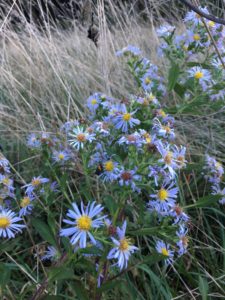
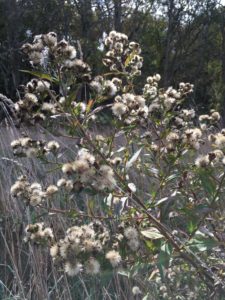
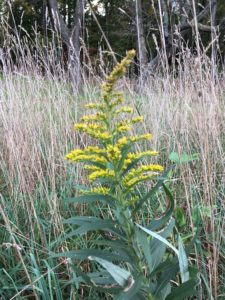
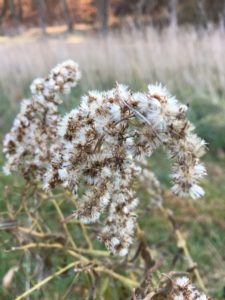 Walking along the paths you can see blooming flowers next to the same species with fully set seed heads – perfect for October.
Walking along the paths you can see blooming flowers next to the same species with fully set seed heads – perfect for October.
Halloween colors punctuate the field – I tolerate Bittersweet in specific locations like on this old sign post on the edge of the field – it reminds me of something that Winnie-the-Pooh 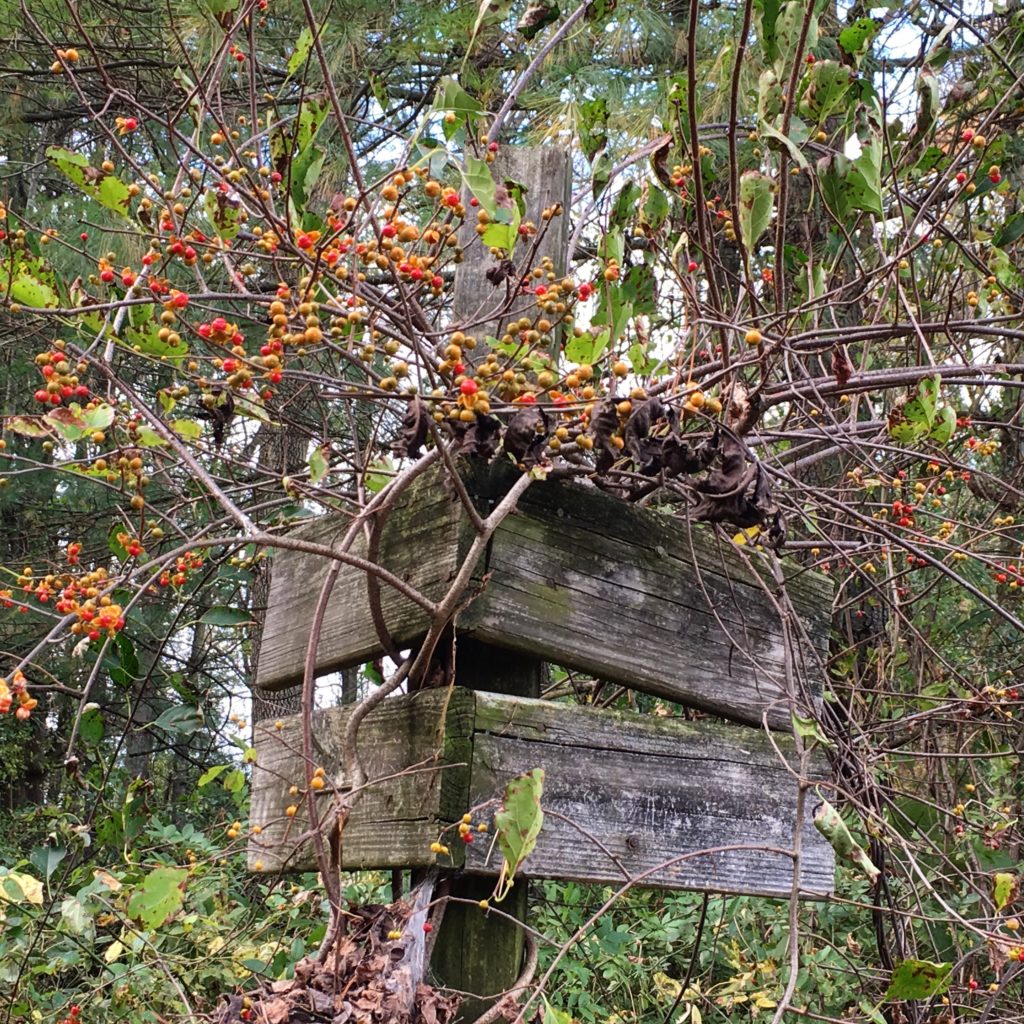 might walk by while singing a little song. I cut the vine and bring it closer to the houses by making wreathes
might walk by while singing a little song. I cut the vine and bring it closer to the houses by making wreathes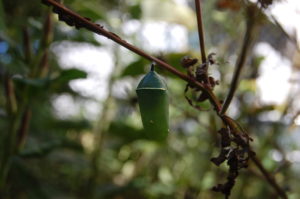
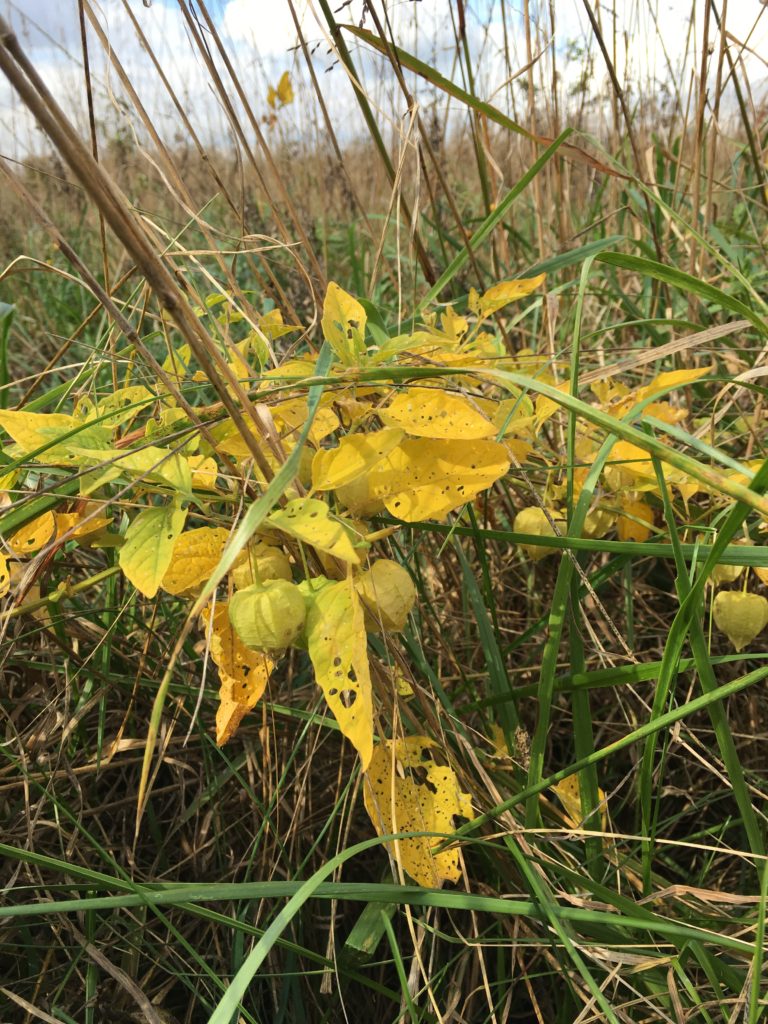
for the fence, sticking sprigs into the doorway pots to add color, and bringing it home to decorate my own door. This highly invasive vine is one to be watched and kept at bay but that orange is hard to ignore and hard to leave behind. Chinese lantern also brightens up the field with its garish yellow leaves and little papery seed pods.
November: Frost
Even though the first frost of the season was light the meadow flowers and most of the forest leaves fell, the light became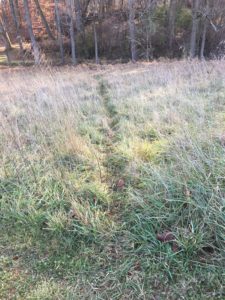 sharper, and the air snapped as the cloudy skies signaled storms on the horizon.
sharper, and the air snapped as the cloudy skies signaled storms on the horizon.
As the vegetation dies back, it becomes clear where the deer walk – although they occasionally use the mown paths, they are creatures of habit that wear deeply ru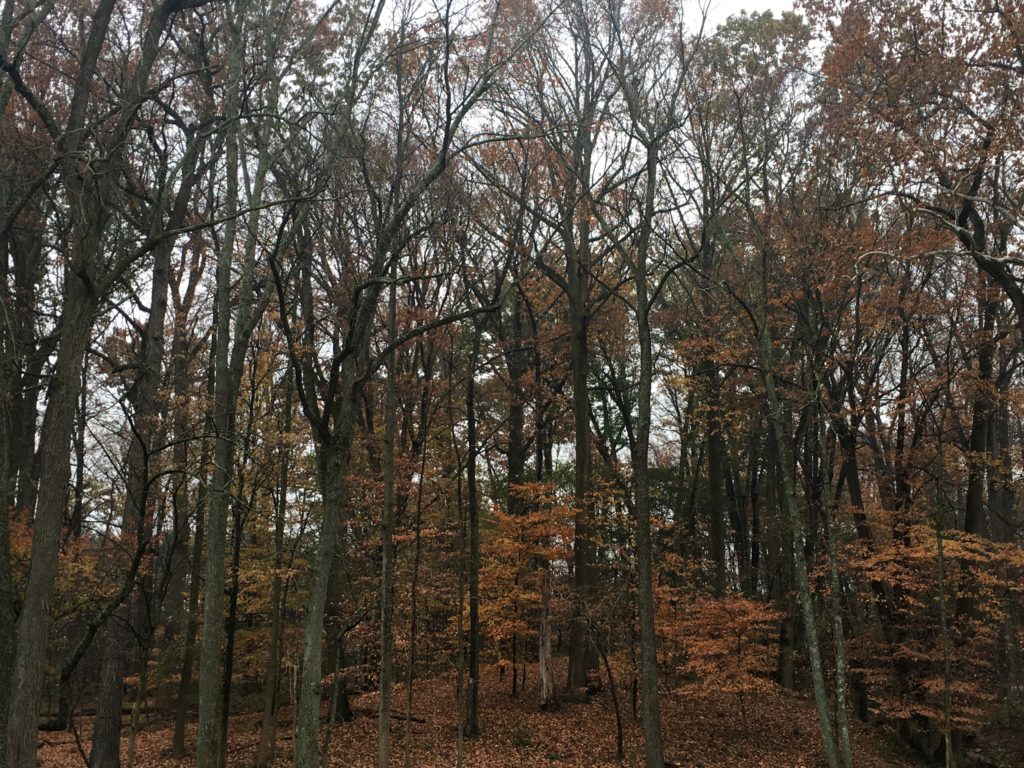 tted paths to the stream and the shelter of the forest that borders the southern edge of the meadow.
tted paths to the stream and the shelter of the forest that borders the southern edge of the meadow.
The dried stalks of the flowers stand rigid above the wilting grasses making details like a dried Queen Anne’s Lace flower stand out – it looks like a small constellation of stars.
I have put off my own getting ready for the cold. It is time to clean up and put away digging and pruning tools, stay inside and make applesauce to enjoy at Thanksgiving and throughout the seasons, and it is time to start to make plans for next year.
December: Killing frost and stark beauty
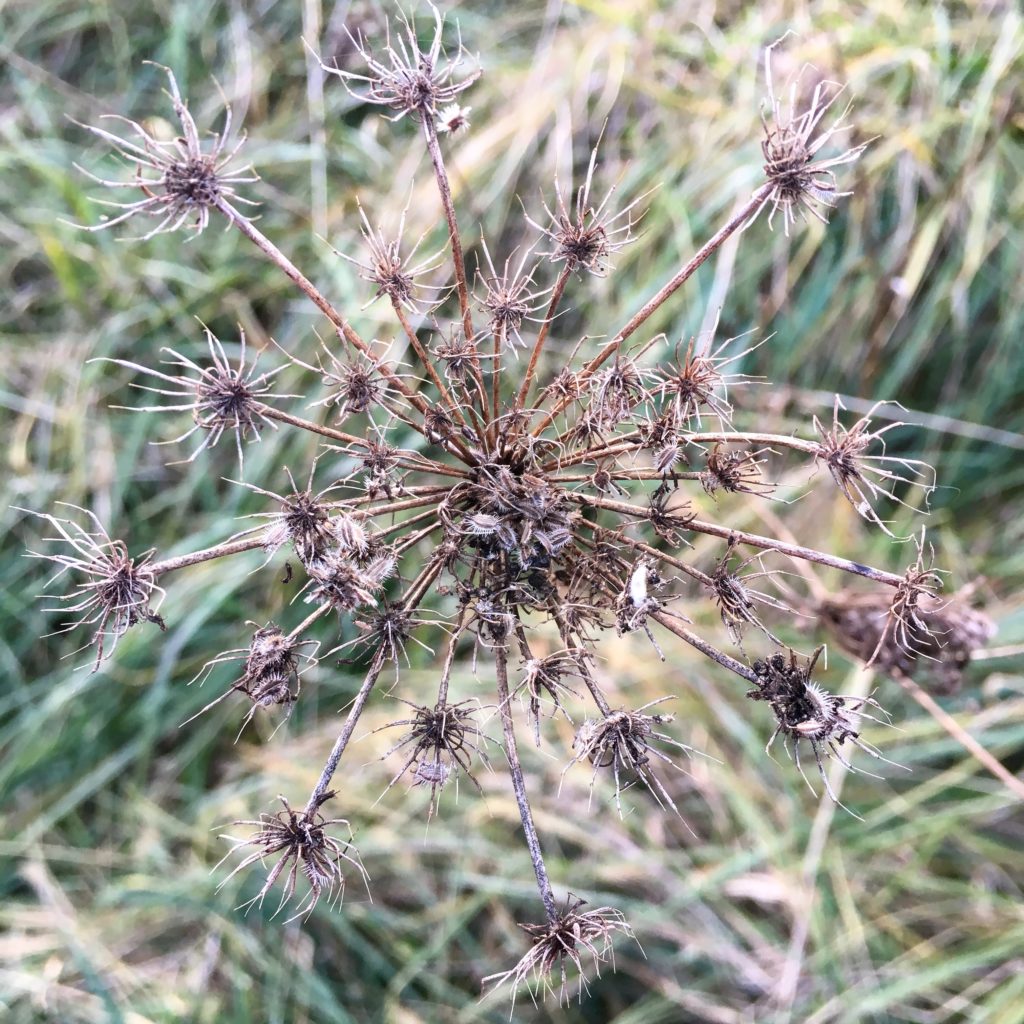 It is cold, especially in the mornings when all you can hear is the crunch of frost below your feet. The average nighttime temperature was 23deg F. That is cold; much colder than the area’s average December; especially when the daytime average temp was only 44. That temperature spread left the meadow zero chance of warming up.
It is cold, especially in the mornings when all you can hear is the crunch of frost below your feet. The average nighttime temperature was 23deg F. That is cold; much colder than the area’s average December; especially when the daytime average temp was only 44. That temperature spread left the meadow zero chance of warming up.
For the first time that I can remember the stream along the meadow edge froze solid – I wondered about the fish and the frogs buried deep down in the streams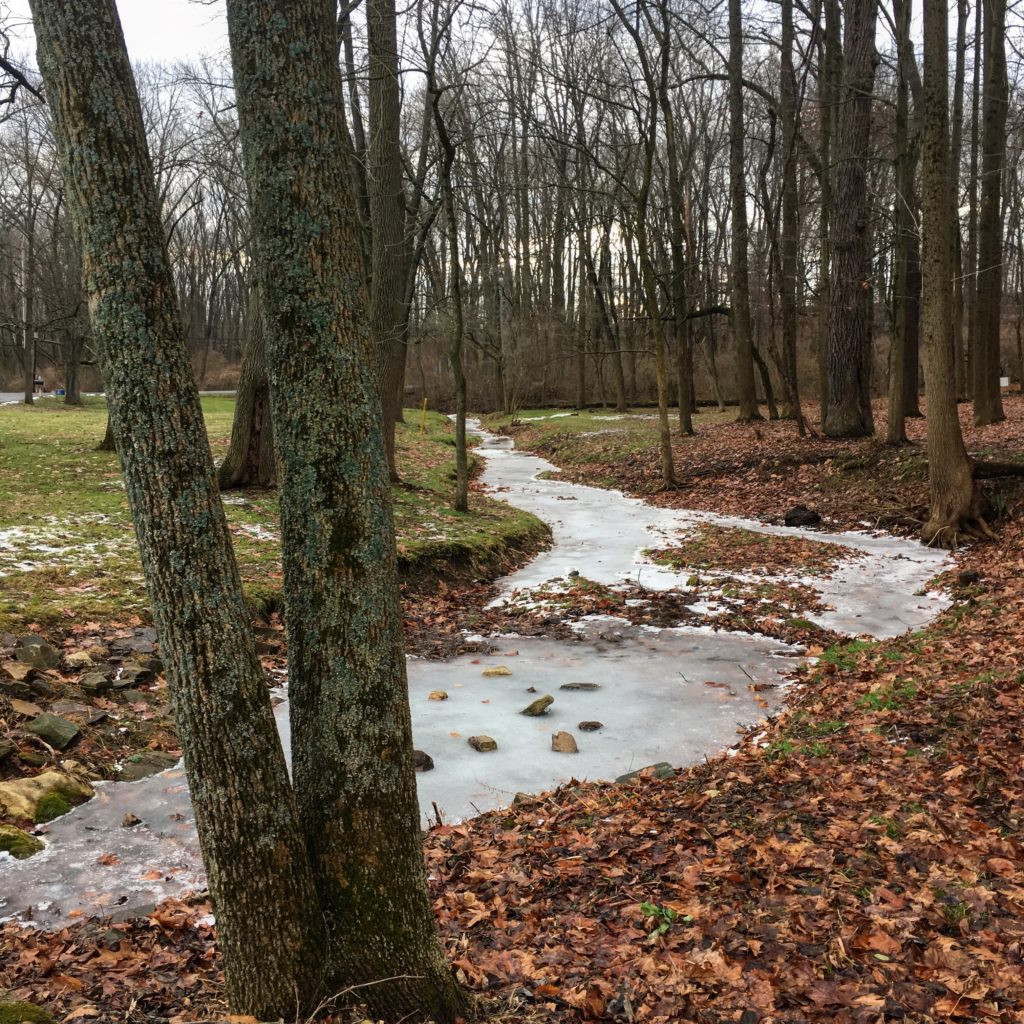 muck and hoped that they would survive.
muck and hoped that they would survive.
In Year 1, we mowed the field in 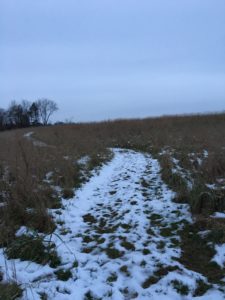 November. There were several reasons that made me rethink the decision:
November. There were several reasons that made me rethink the decision:
- First, the field looked so barren and blah for the entire winter
- Second, it left no places of shelter for the creatures that inhabit the meadow. Deer sleep in little nests in the grasses, voles, moles and field mice tuck down under the grasses and top soils, and birds hunker down in the detritus of the plants.
- Third, it cut down the seed heads that provide food for the overwintering birds and small creatures.
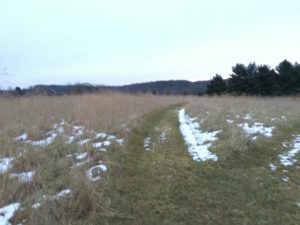 The Year 2 plan was to let the meadow stand for as long as possible and mow at the end of winter. Delaying mowing made the land more animated
The Year 2 plan was to let the meadow stand for as long as possible and mow at the end of winter. Delaying mowing made the land more animated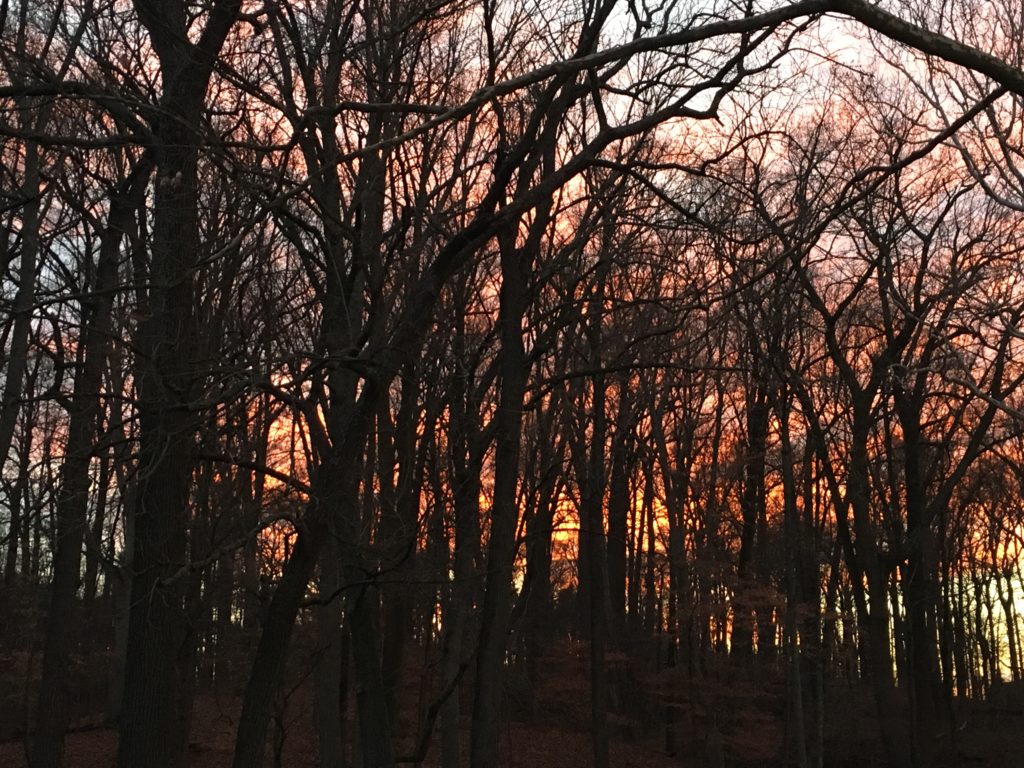 as the stiff leaves waved in the winter winds. When the first snow fell it clearly defined the paths by turning them bright white against the brown field that had a sprinkling of snow between the clumps of plants. All was quiet in the snowy field except for the rustling of birch leaves and some far away geese flying in formation.
as the stiff leaves waved in the winter winds. When the first snow fell it clearly defined the paths by turning them bright white against the brown field that had a sprinkling of snow between the clumps of plants. All was quiet in the snowy field except for the rustling of birch leaves and some far away geese flying in formation.
The winter sun is low in the south now leaving the meadow with a mere 9 hours of daylight between sunrise and sunset. To make up for it the colors of those events are intense and changeable.
Year End Thoughts
Many people remark that it is wonderful to have a meadow because it needs no maintenance; you can just let it go – Make no mistake, a meadow is a garden and like a garden it needs attention to keep it vibrant, healthy, and in check. Building a meadow from seed is an intensive, challenging process but it is also rewarding to watch the plant communities develop, compete and thrive.
Over the course of the year I have noticed an increase in the bird population as well as an increased variety of pollinators and pollinator predators. There is also an increased number of burrowing creatures including ground hogs, field rats, voles and moles. There is a wonderful food source in the neighboring field – corn! And wonderful, unplowed shelter in the meadow. The current mammal population is still small but needs watching as time passes – these creatures do a service in turning over soil but too many, like too much of anything, may lead to imbalance and problems.
It will be interesting in Year 3 to see what perennial wildflowers have taken root and what type of show they will provide. This is especially relevant close-in to the houses where maximum flower power is desired. I think that using annuals as cover while the perennials develop is a wonderful way to provide instant gratification and garden color and Cosmos are perfect in this role because they are reliable and provide a nutritious food source for finches and other small birds. How many to plant and when will require watching and waiting to see how many wildflowers have developed and fill in with a Cosmos cover.
